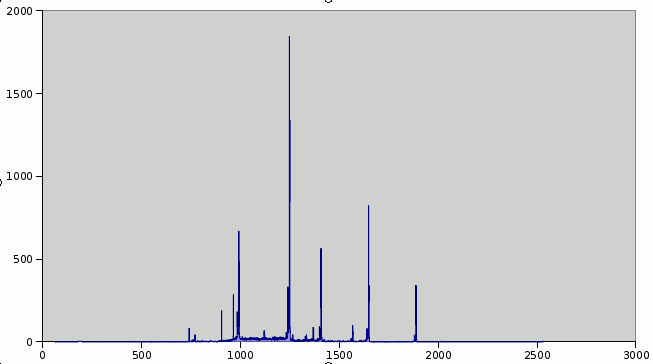When programmers design web sites (comic)



At the time this blog posting was made, my blog had hand-drawn borders in the page title. They were generated by a CGI program on the fly. For each visitor, a number about 40 pixels below your browser width is recorded in my server logs. I wrote a perl script to create a histogram for unique visitors, and pasted the result into gnumeric to create the chart.
The peaks seem to correspond to 1024, 1280, 1400, 1600, 1920 screen widths, with 1280 being the greatest peak. This indicates that most people have their browser window maximized.
There is also a section of uniformity between 1000 and 1280. This seems to be a sweet spot among those who do not maximize their browsers.
Surprisingly, there are still a few people running at 800x600 resolutions. And one at over 2500 pixels across.
The main text on the screen should be no wider than the width of a human head, 50-60% of the screen width. This eliminates head movement and keeps the text within the peripheral vision of most people, reducing eye movement.
Ask yourself this: Do newspapers, magazine, dictionaries, encyclopedias and other print media have text across the full width of pages? Or are they printed in columns?
If it's any wider, it forces the reader to move his head or eyes and becomes annoying to read. If a site designer wants people to read the site and come back, he should make it comfortable to visit. For example, the main text on this blog looks fine on my netbook (1024x600) but is too wide to read comfortably on my 15" laptop screen (1366x768).
.
The best thing about a widescreen monitor is having two apps open side by side (like two columns) -- It's always *really* annoying when a site forces horizontal scrolling (or maximise).
Text line lengths can get waaay too long on a maximised, large screen (making it harder to read), so I actively avoid maximised browser windows.
 Now it's a commercial product, but Zwibbler was once a fun side-project, and here's some details on its implementation.
Now it's a commercial product, but Zwibbler was once a fun side-project, and here's some details on its implementation.
 If one apple costs $1, how much would five apples cost? How about 500? If everyday life, when you buy more of something, you get more bananas for your buck. But software companies are bucking the trend.
If one apple costs $1, how much would five apples cost? How about 500? If everyday life, when you buy more of something, you get more bananas for your buck. But software companies are bucking the trend.
 Some ill-informed remarks on various programming languages.
Some ill-informed remarks on various programming languages.